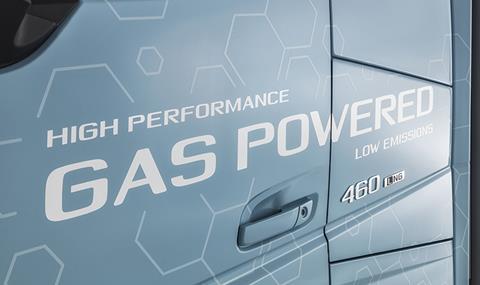
Changes in regulation, developments in new technology and rising diesel costs are prompting haulage operators to seriously consider non-diesel alternatives. A number of factors mean that LNG (Liquefied Natural Gas) is increasingly proving to be a good and viable option, not just in terms of lowering environmental impact but also improving performance and cutting costs.
Transport companies are waking up to the potential of LNG. In Europe alone, the number of LNG trucks climbed to around 6,000 in 2019 – up from only 170 two years ago. That’s a pretty promising start and there’s a lot of potential for natural gas to keep growing.
First of all, new engine technology has raised the performance of LNG vehicles. The Volvo FH LNG introduced in 2017, for example, offers the same performance and operating range as diesel. It comes with a 420 or 460 horsepower engine that delivers performance and productivity on par with a regular Volvo FH with the same power rating.
Secondly, lower costs. In the past, LNG costs were kept high due to the high cost of building expensive facilities. But now, an oversupply of LNG globally, alongside LNG-friendly policies has driven down LNG prices to historic lows across Europe. Both the International Energy Agency and the European Commission have stated that they expect the price pressure to continue in the coming years. Many customers report a sharp drop in fuel costs after the switch.
The EU, national and local governments are supporting LNG transport as a path to lower CO2 emissions and better energy security. This has helped improve fuelling infrastructure – another key factor for the growth of LNG vehicles. There’s an ambition to expand the number of LNG stations tenfold, from about 200 currently to 2,000 across Europe.
Then there is the environmental footprint. While electric trucks are more suitable for urban and regional fleets, LNG is already a true substitute for diesel in regional and long-haul. The Volvo FH LNG, for example, emits 20% less CO2 than a regular Volvo FH. When fuelled with bio-LNG, CO2 emissions can be reduced by 100%.
While still less prevalent than LNG and costly to produce, bio-LNG is proving to be an increasingly interesting solution given its many advantages which include lower CO2 and NOx as well as significantly less PM (Particulate Matter) emission. Then there is also the fact that the raw material for bio-LNG, waste or agricultural biomass, is plentiful and can be produced locally saving transport costs and carbon emissions.
It’s perhaps little wonder that more and more transport operators are looking at LNG as an alternative.













